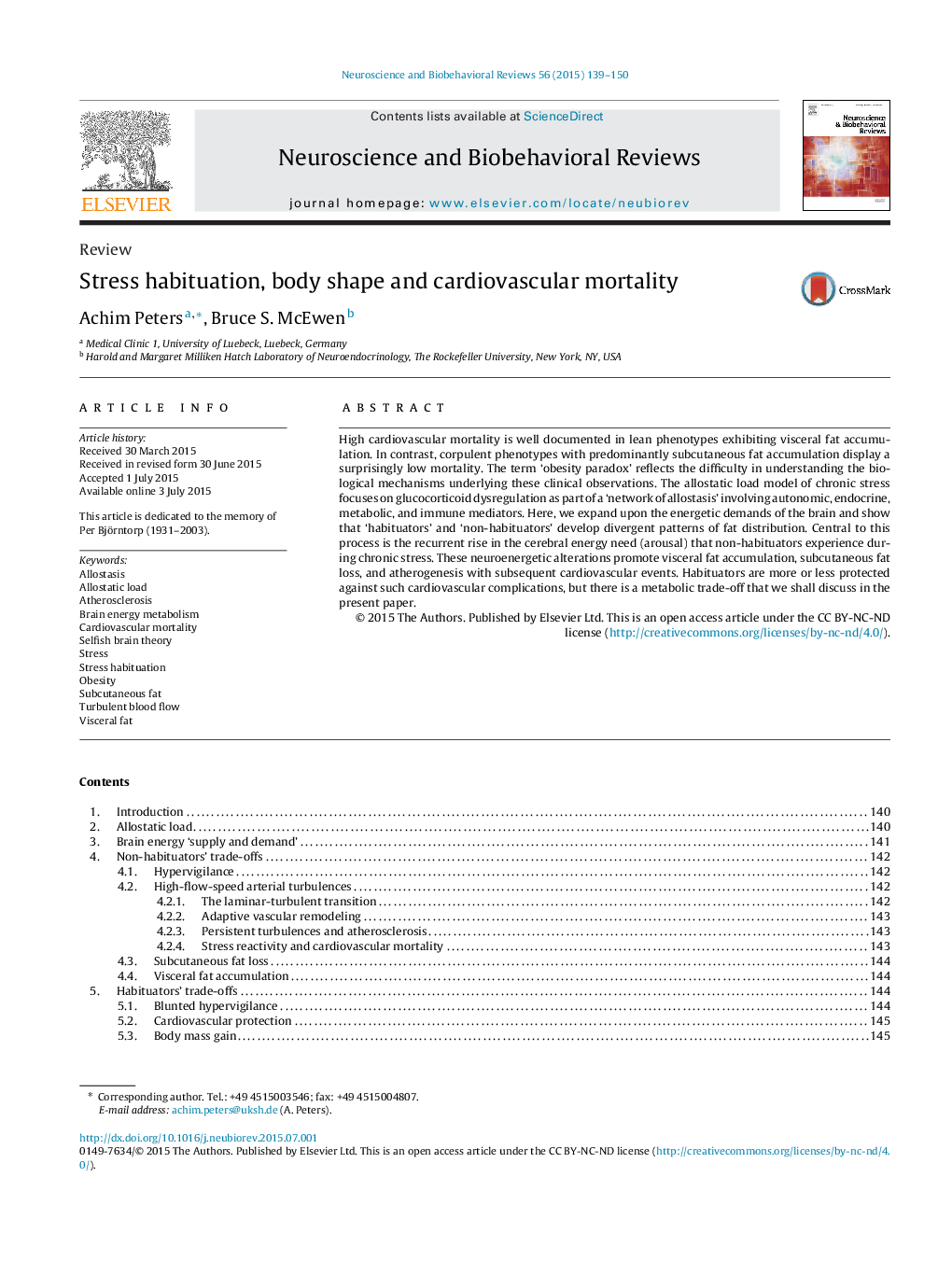| کد مقاله | کد نشریه | سال انتشار | مقاله انگلیسی | نسخه تمام متن |
|---|---|---|---|---|
| 7303302 | 1475314 | 2015 | 12 صفحه PDF | دانلود رایگان |
عنوان انگلیسی مقاله ISI
Stress habituation, body shape and cardiovascular mortality
ترجمه فارسی عنوان
زوال تنش، شکل بدن و مرگ و میر قلبی عروقی
دانلود مقاله + سفارش ترجمه
دانلود مقاله ISI انگلیسی
رایگان برای ایرانیان
کلمات کلیدی
موضوعات مرتبط
علوم زیستی و بیوفناوری
علم عصب شناسی
علوم اعصاب رفتاری
چکیده انگلیسی
High cardiovascular mortality is well documented in lean phenotypes exhibiting visceral fat accumulation. In contrast, corpulent phenotypes with predominantly subcutaneous fat accumulation display a surprisingly low mortality. The term 'obesity paradox' reflects the difficulty in understanding the biological mechanisms underlying these clinical observations. The allostatic load model of chronic stress focuses on glucocorticoid dysregulation as part of a 'network of allostasis' involving autonomic, endocrine, metabolic, and immune mediators. Here, we expand upon the energetic demands of the brain and show that 'habituators' and 'non-habituators' develop divergent patterns of fat distribution. Central to this process is the recurrent rise in the cerebral energy need (arousal) that non-habituators experience during chronic stress. These neuroenergetic alterations promote visceral fat accumulation, subcutaneous fat loss, and atherogenesis with subsequent cardiovascular events. Habituators are more or less protected against such cardiovascular complications, but there is a metabolic trade-off that we shall discuss in the present paper.
ناشر
Database: Elsevier - ScienceDirect (ساینس دایرکت)
Journal: Neuroscience & Biobehavioral Reviews - Volume 56, September 2015, Pages 139-150
Journal: Neuroscience & Biobehavioral Reviews - Volume 56, September 2015, Pages 139-150
نویسندگان
Achim Peters, Bruce S. McEwen,
